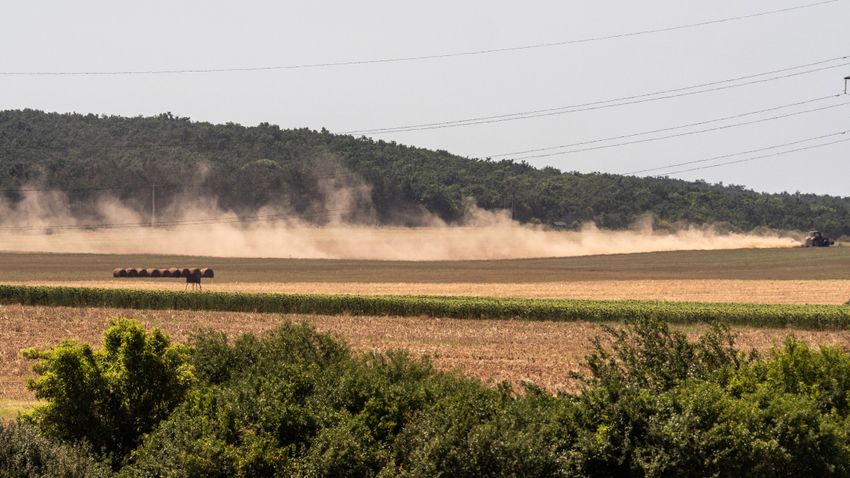And according to forecasts, the situation is getting worse, in a few years, the vast majority of these people will face severe water shortages, which will lead to another wave of migration. According to the call of UNESCO (United Nations Educational, Scientific and Cultural Organization), the aim of the International Day is to draw attention to the problem and encourage the international community to find a sustainable solution to this phenomenon.
It was no coincidence that the UN drew attention to this problem
Desertification and drought as a phenomenon are closely related to the destruction of the Earth, so every year on this day they raise awareness of our responsibility in this regard through a global campaign, as well as draw attention to the need for international cooperation and global cooperation. drought effects. A quarter of the Earth’s surface is covered by earth. The environment of these regions is seriously threatened by various impacts, deserts are greatly expanding, and due to changing weather, drought is increasing. According to official UN calculations, the expansion of deserts will soon endanger the lives of more than a billion people, and today they affect a third of the entire Earth’s surface. In southern Europe, for example, more than 300,000 square kilometers are directly threatened by desertification. Here, it’s not about turning into a desert, but rather about a level of melancholy that really creates conditions suggestive of desert conditions. Climate change is primarily to blame for all this, but desertification is also caused by improper land use. This occurs in areas where the rate of evaporation exceeds the amount of precipitation. This is the case primarily in North Africa and a large part of Australia, as well as in North America, the southwestern region of the USA and many regions of Mexico, but this danger threatens vast areas of Central Asia, and in Europe mainly the extremities of the Mediterranean. The problem is only exacerbated by forest fires that occur mainly in the summer, as it is estimated that nearly 800,000 hectares of Mediterranean forests fall prey to fire each year.
Our country is also in danger
According to scientific projections, Hungary’s climate will shift towards the Mediterranean, which will lead to higher average temperatures, lower summer precipitation and increased extremes, floods, droughts and more frequent water restrictions. According to the relevant United Nations Convention, which deals with combating drought and desertification, the entire territory of our country is considered a drought-affected region. The local drought damage – if we consider the last year – is in the hundreds of billions of forints. The United Nations World Food Organization (FAO) has classified the Sand Ridge between the Danube and Tisza Rivers as semi-desert. Due to the drought of recent decades, the groundwater level has decreased by 3-5 meters, and the stagnant water on the surface has practically disappeared. Just for comparison xx. At the beginning of the 20th century, there were about 600 natural lakes between the Danube and Tisza, but today they have almost completely disappeared. The best example of this is Kerekegyháza in Bács-Kiskun County and the surrounding areas. The arable fields around the city are almost unsuitable for traditional grain cultivation, because there is more sand than soil. Residents have been facing this problem for a long time and are trying to deal with the situation in different ways.
what should be done?
Above all, a new approach to water management is needed in order for change to occur and to slow down this negative process. The amount of water distributed must be allocated capriciously, taken when there is a lot of it, for example during various floods, and allocated to periods of drought and drought. The problem is related to climate change, which mostly causes an increase in the greenhouse effect. In order to bring about positive change, emissions of harmful gases must be reduced, and here we mainly think of industrial production and large-scale factories, transportation and heating. And we must make our lifestyle more energy efficient and closer to nature, otherwise we will face serious hardships, not to mention our offspring. What we can do may seem like little things at first glance, but believe me, they are of great importance.
used literature
Message from UNCCD Executive Secretary Ibrahim Thiaw on World Day to Combat Desertification and Drought 2020: www.youtube.com/watch?v=7LN-4uF-xpM
Attila Kereni: Public Environmental Protection. Zged, Muzik Education Studio, 2006.
Message from UN Secretary-General António Guterres on the occasion of the World Day to Combat Desertification and Drought 2020: www.youtube.com/watch?v=x9yAVKK7PAY
Tim Flannery: The Weather Makers. How do humans change the Earth’s climate and what is the impact on life? Translated by Tibor Kovacs Akkord, BP. , 2006 (The future of our planet)












































